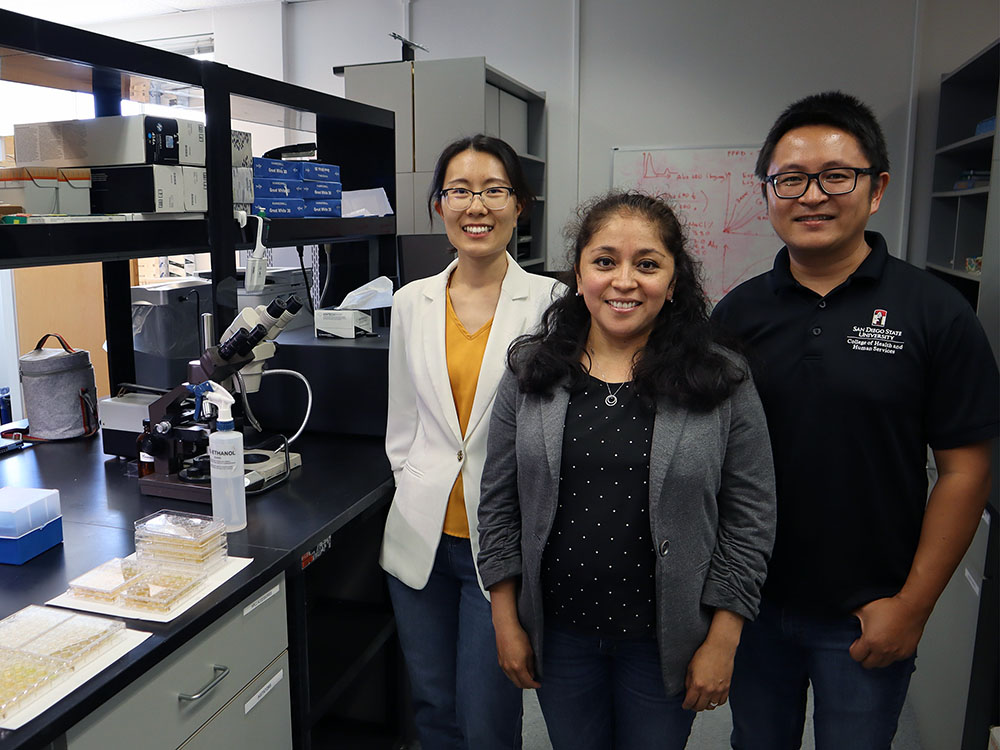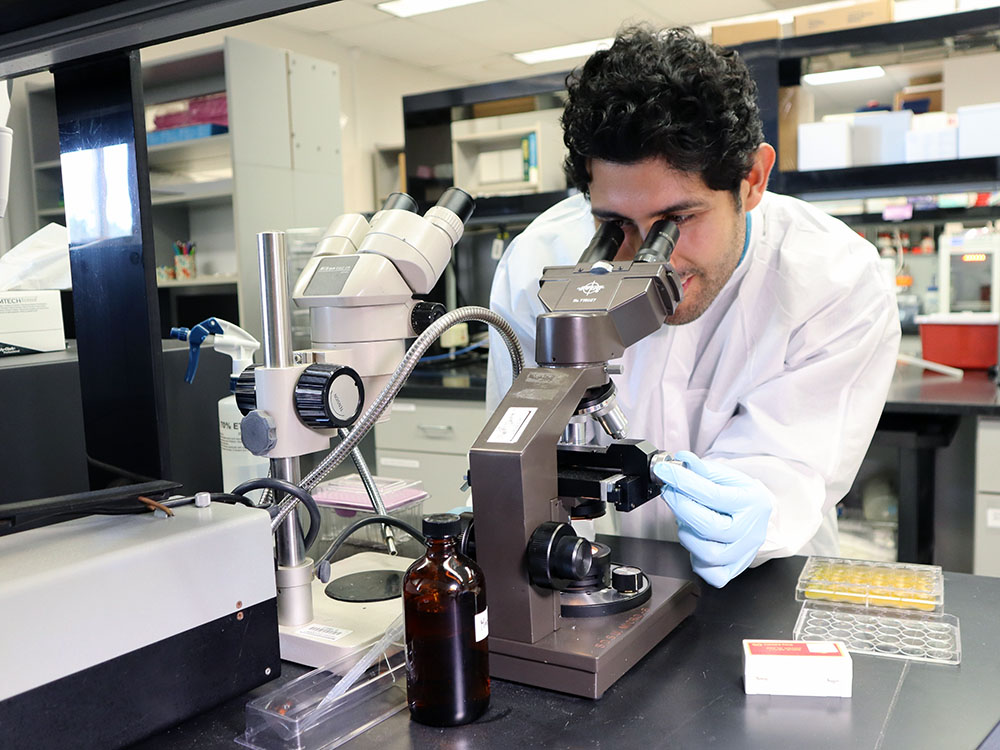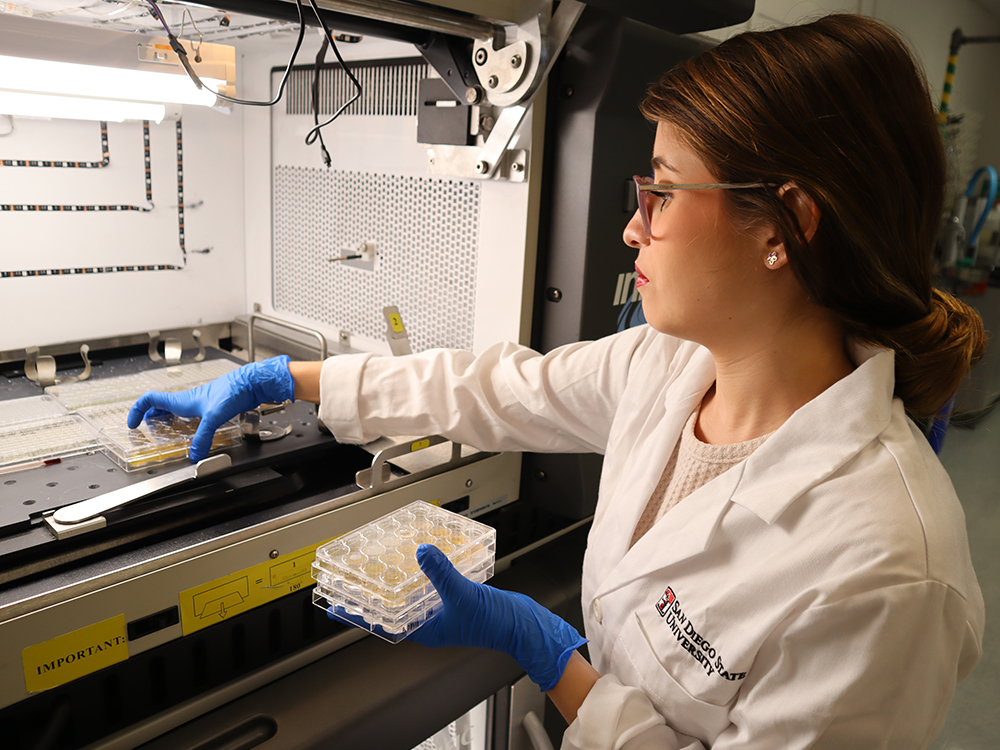NASA awards SDSU researchers for innovative projects in sustainable guacamole for astronauts and autonomous drone safety.
By Bryana Quintana, Sarah White, Peggy Pico
In August, NASA announced that SDSU was among 15 institutions awarded under this initiative, which grants researchers at Minority Serving Institutions funding to devise new technologies for space exploration and commercial industry applications.
Using guacamole as a vessel for nutrient-packed microalgae, researchers aim to add more variety to astronauts’ diets while providing essential nutrients for long-duration space journeys.
Researcher Cristal Zuniga, an assistant biology professor in SDSU’s College of Sciences, joined forces with assistant professor Jing Zhao and associate professor Changqi Liu, food scientists in the College of Health and Human Services, to create the superfood recipe in their SDSU laboratories.
“Due to the long travel times, all foods have to be in a shelf-stable form,” Zhao said. “So there are very limited food choices in space and many don’t have all the desirable sensory properties.”
After extensive brainstorming, the team selected guacamole as the food to serve up in space for a few reasons, including its green color which allows the green algae to blend in easily. Additionally, guacamole is flavorful and can help minimize some of the algae’s salty, ocean-like flavors and smells, similar to those of seaweed products. Guacamole is also an enjoyable way to broaden astronauts’ food options.
“We’re utilizing the nutrients from algae to put it in a more desirable product,” Zhao said.
Algae is full of antioxidants, making it an innately healthy food. But Zuniga’s team will pack it with even more nutrients to meet crews’ dietary needs in space.
From there, Zhao and Liu’s group will combine the algae with traditional guacamole ingredients such as onion, salt and lime to create a powdered product ready for flight.
Concocting this space snack is no easy feat. Researchers must make it similar in flavor and texture to the earthly version with minimal processing: just adding water and mixing. Moreover, with Artemis and future missions to Mars, astronauts will venture farther and stay in space longer than ever. So, the team must also ensure their space guac will last throughout these cosmic excursions.
“Avocado is a perishable item, it won’t last very long,” Liu said. “So if we could make it into a ready-to-make mix and also enrich it with more nutrients, it could be a good shelf-stable product on Earth as well.”
Foods like this could be especially valuable to communities lacking access to fresh food on our home planet. It doesn’t take much to cultivate algae, which grow abundantly worldwide. And because algae handle stress remarkably well, it could prove a crucial sustainable food source in the harsh conditions of deep space and extreme environments on Earth.
Drone Safety
NASA’s MUREP award also funds SDSU aerospace engineering professor Jun Chen and his students to make the sky safe and feasible for drones.
Chen and one of his doctoral students are developing algorithms to predict the safest flight paths for autonomous drone aircraft flying under 400 feet.
Working with NASA will enable access to a wide array of realistic data sets to improve the adaptability of this algorithm, previously funded through the National Science Foundation.
With GPS information, cameras and onboard sensor data — like speed and direction — the drones will be able to adjust in real-time to give a wide enough berth to buildings and other aircraft.
Armed with improved algorithms, air traffic controllers can weigh the trade-offs of reducing collisions and maximizing the number of drones in a given airspace as needed.
“Air traffic controllers are working in high-pressure, safety-critical situations,” Chen said.
Chen’s goal is not to replace humans with autonomous machines but to help humans make decisions more efficiently and allocate their workload to other tasks. Human operators will still have to decide how high a chance of colliding with unpredictable objects such as birds they are willing to accept.
Increasing the number of drones in the sky can expedite shipping of perishable goods, including medicine, to difficult-to-reach places such as rural communities or routes regularly delayed by gridlocked traffic.


